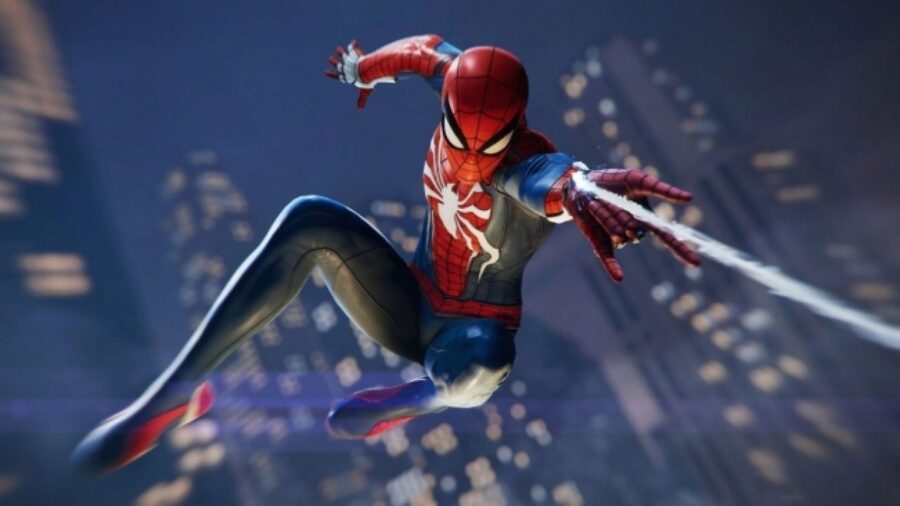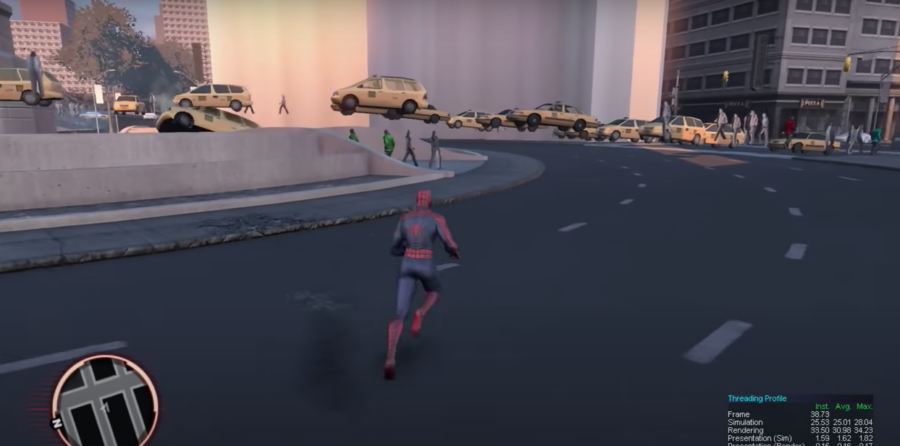A Lost Spider-Man Game Has Been Unearthed
You've never played this Spider-Man game before, check out this canceled console game!
This article is more than 2 years old

The alpha build for a tie-in video game was practically in spitting distance when production on Tobey Maguire’s Spider-Man 4 stalled in 2010. While director Sam Raimi was flipping through four versions of the same script, Radical Entertainment had already pre-rendered a free-roaming open world for Maguire’s Peter Parker to police, navigate, and explore to his heart’s content. By the time Raimi dropped the ball on Sony, Radical was a few coders away from screwing the cap on their own project. Talk about jumping the gun.
Unfortunately, when development on the movie folded the same year, so did work on the tie-in video game. Lucky for us, nonprofit gaming museum Obscure Gamers got its webs on a developer build of Spider-Man 4 and was willing to demo it on Thursday for fans of Maguire’s take on the wallcrawler. Until last week, Radical’s sandbox world of superpowered gangsters and otherwise impenetrable helis had never seen the light of day. Take a look at what could have been below:
A Wii edition of the same game was previously in circulation, but it was an early build and lacked the foundations of a working sandbox. Instead of fully reactive environments, white geometrical shapes dotted the New York skyline. Spider-Man came with crosshairs and interactive points in the map were practically still etched in red and green markers. The gameplay wasn’t nearly as smooth either and can only be played on the Dolphin Emulator. The Xbox 360 version of Spider-Man 4 Obscure Gamers released on Thursday was entirely pre-alpha and already featured functioning aesthetics. For comparison, this is the Wii version shared two years ago:
Despite being close to completion, the footage is radically underwhelming. It opens with a brief loading sequence and a title screen: Spider-Man is perched on the side of a building, watching taxis go by. New York City is a rousing metropolis at sundown; there are backlights illuminating posters, more than one style of car carousing down one-way lanes, stores delightfully open for business, and street signs with discernible writing presented. Everything looks peachy at a glance. Spider-Man 4 may have questionable mechanics, but New York City at the very least seemed alive.
Spider-Man soon leaps into action and it’s immediately made apparent the city is more reactive than we realize. NPCs can be spooked and beaten up, vehicles can be dented, and pavements sustain significant environmental damage every time Peter Parker attempts a superhero landing. Buildings are also fully dynamic. Bricks fly off every time Spidey makes contact with a wall and figures are properly shadowed depending on the direction the sun is facing. NPCs call out to Spider-Man whenever he’s on street level, dust kicks up from the ground with every kick, lunge, or punch, and speed lines trace the webcrawler’s form during freefall. Spider-Man 4 shows impressive detail considering the graphical limitations of late 2000s engines.
Unfortunately, the demo is about as unfinished as it gets. The opening sequence for Spider-Man 4 is completely mute and the title screen might as well have been typed out in Microsoft Word. Most NPCs are still grayed out, partially rendered in blocks, and taxi drivers are non-reactive stick figures. Instead of the Hudson River, the New York City harbor looks out into a desert wasteland. Central Park is a monochromatic meadow with no trees. Taxis are levitating over Columbus Circle, cresting over unseen obstacles in the shape of an arc. Some NPCs are suspended in the air, only to drop with a thud once Spider-Man came close. Walking pedestrians fall in gaping holes in the concrete that haven’t been rendered yet.

Even the pause screen boasts a parody of its own, with the word “spider-pause” emblazoned in the middle. Below it reads “mission select,” but levels are improperly named and missing one or two options. Spider-Man’s move set is listed out almost like a system error and environmental damage that hasn’t been animated manifest as purple clouds of smoke. And of course, the swinging mechanics are as spotty as ever, with web lines clinging on to structures that don’t even exist. There’s preset voice acting, but it’s not necessarily good or polished. Spider-Man can crawl, move, jump, fight, and run just fine in Spider-Man 4 and the map is mostly functional, but the execution is as rough as you’d expect from a pre-alpha build.
The Spider-Man 4 demo features two boss fights: a helicopter dustup entitled “Defeat Gunship” and a seaport slugfest codenamed “Brawler Battle.” The first has Spider-Man evading RPG fire and trying to web a helicopter to the ground. The result is a frustrating mid-air scuffle with busted fighting mechanics and a health bar that just won’t trickle down, made irreparably worse by a long, drawn-out fight that effectively leads to nowhere. The second is what Marvel’s Spider-Man could’ve been without Insomniac Games’s expert supervision: a distressingly off-kilter fistfight in the docks against the Red Devil Brawlers. A shame, because Peter Parker’s web work hasn’t looked this variegated until Marvel’s Spider-Man came along. The footage crashes a little over fifteen minutes in, despite the almost nineteen-minute runtime.
Radical used the same map as Prototype, a two-part series about an amnesiac shapeshifter prowling New York City during an outbreak, with Activision closely in tow. The franchise has since developed its own following, where it is widely praised as a fitting contemporary of first-party exclusive Infamous. Imagine the fireworks if Spider-Man 4 had come out as promised. Marvel’s Spider-Man would have been realized long before Ted Price could get his arachnids in a row.












